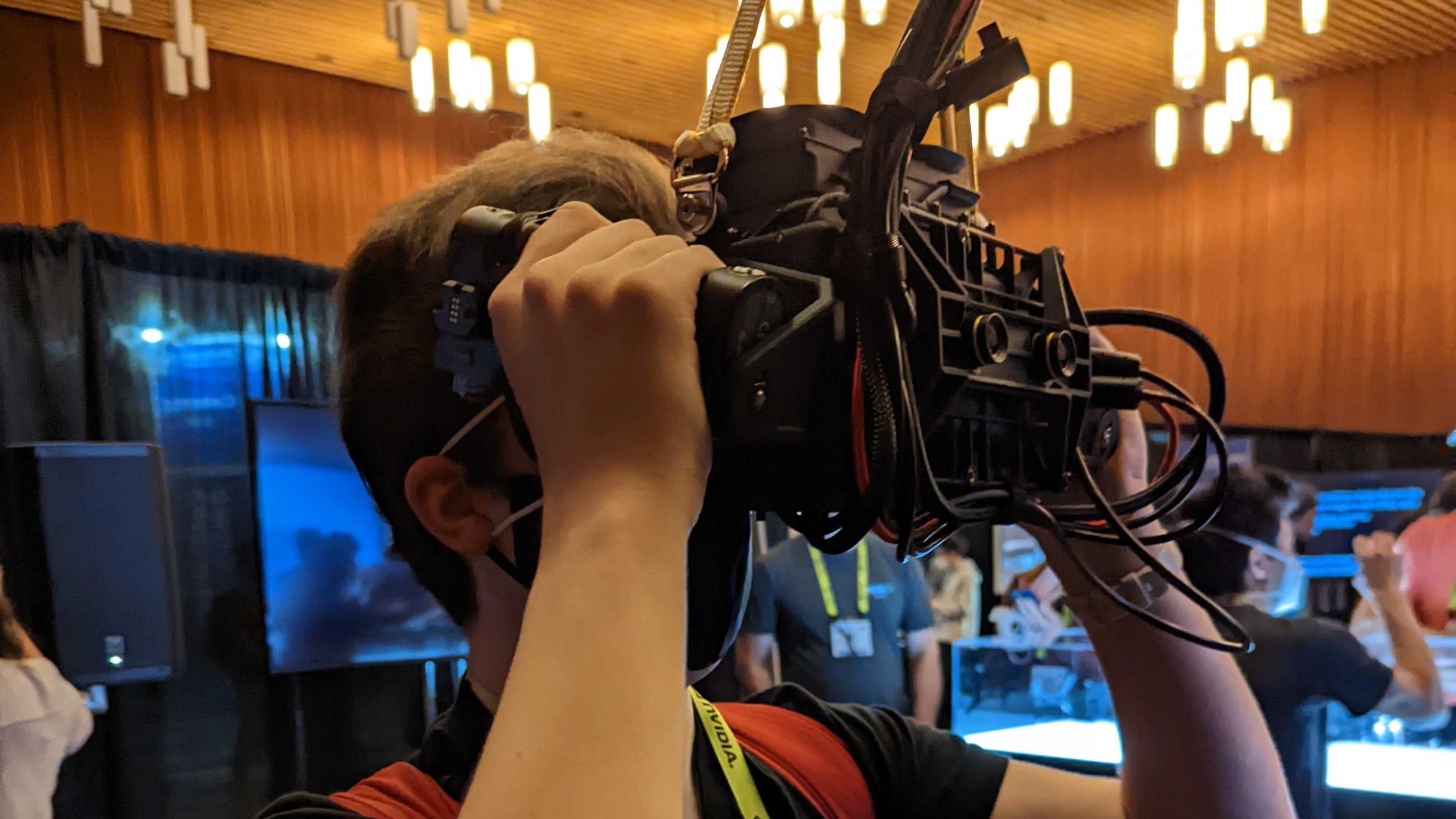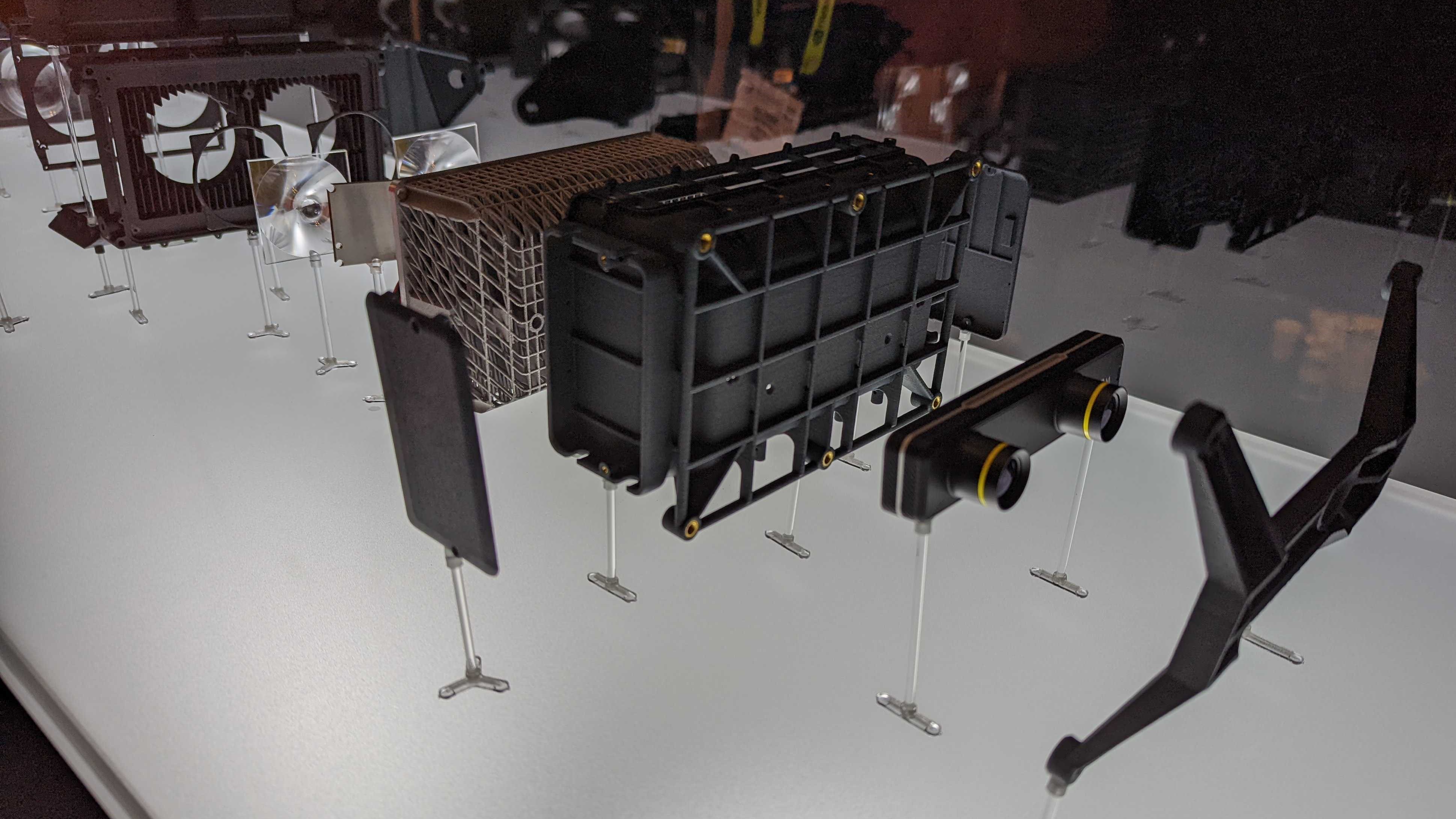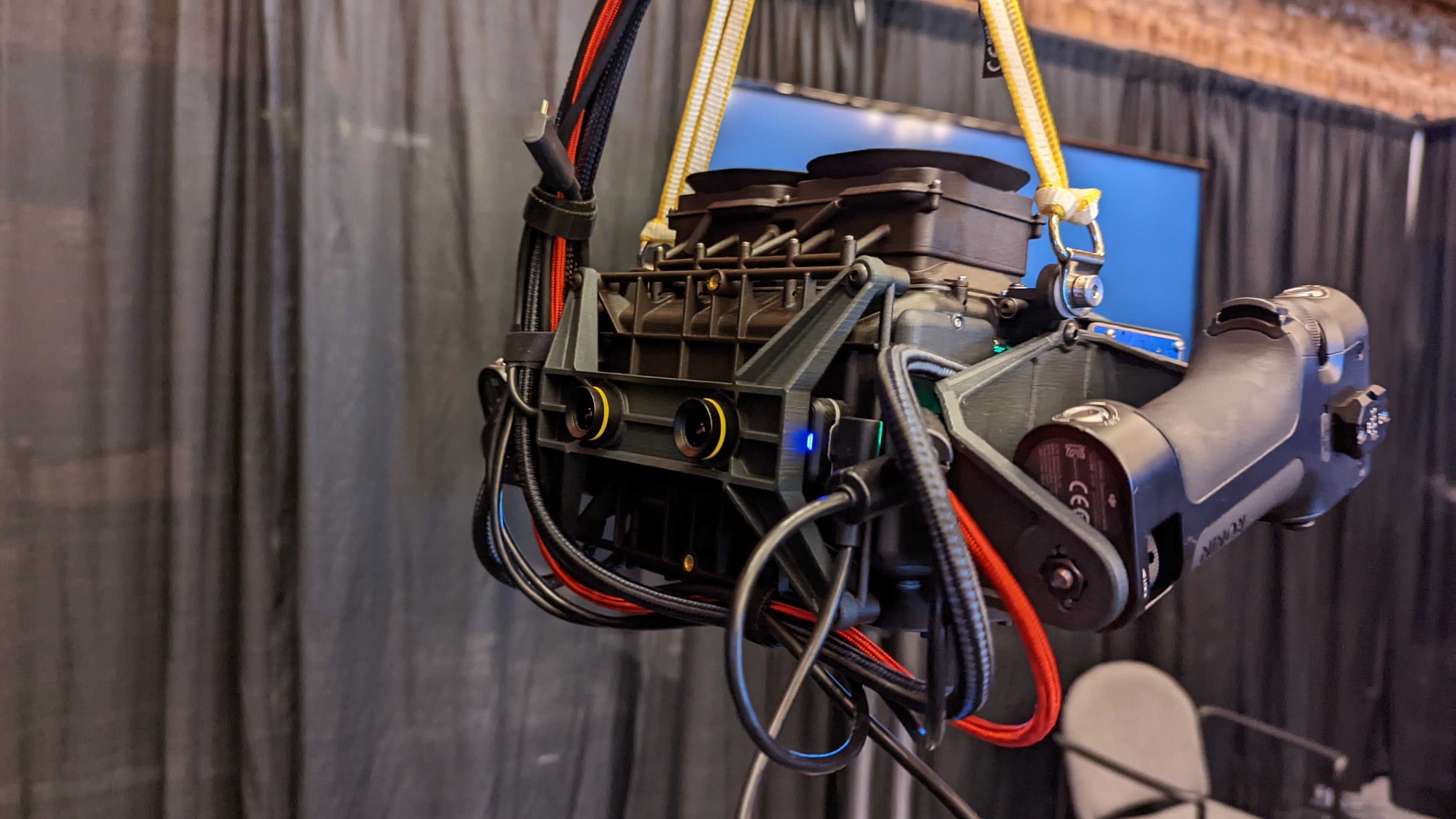I used a brilliant VR headset that Meta will never release

At Siggraph 2022 – a tech event where researchers can show off their latest projects – I had the opportunity to try out a prototype VR headset that Meta will never release to the public.
This isn’t the first time Meta has showcased its prototype headsets. Back in June, Meta CEO Mark Zuckerberg and members of Meta’s Reality Labs division revealed more than a dozen devices they will never launch.
One of these headsets is the Starburst – a bulky VR headset that can achieve a brightness of up to 20,000 nits, which makes it around 200 times brighter than the Oculus Quest 2.
This extra brightness isn’t intended to turn the headset into some kind of eye-burning torture device. Instead, it helps Meta experiment with HDR.
HDR (high dynamic range) is the tech used in displays to make colors pop in bright scenes, all the while ensuring that dark objects are detailed in shadowy scenes. TVs lacking HDR will show more muted colors, and scenes set in dark environments will be little more than a shadowy blob.
By turning up the brightness of its headsets to the levels Starburst can deliver, Meta is able to greatly improve its headset’s HDR capabilities. In practical terms, this allowed Meta to create stunning immersive environments.
All of the lights
Starburst transported me to a shoreline, a beautifully realistic scene of waves gently lapping against the nearby rocks.
Sign up for breaking news, reviews, opinion, top tech deals, and more.
Turning up the brightness from 5,000 to 10,000 nits, I was transported to an upside down-like version of the same coastline. The sky turned from a bright blue to a cloudy crimson, and the once inviting waters glowed an ominous green – it was like I was in a scene from Stranger Things Season 4.
Amping things up to 20,000 nits and the scene became almost pitch-black, yet I could still make out the details of the scattered rocks around me. The only illumination was these random beams of light that would suddenly streak down from the sky, reflecting off the water and helping to outline my surroundings.
Despite the environment becoming progressively more sinister, each layer looked progressively more real.

This was especially true of Meta’s other HDR demo. Rather than being a whole scene, Meta suspended a large metal marble – about the size of a basketball – in front of me.
This orb was reflecting an office space back at me, and as the headset's brightness was turned up, the quality of the reflections improved dramatically.
The ball was dull and gray at its edges at 100 nits; the same brightness as the best VR headsets we have today.
I could make out the reflected scene, but it was clearly fake. At 1,000 nits – the sort of brightness you’d expect from one of the best 4K TV's out there – the orb looked way more real, with the reflected scene becoming clearer still. Taking things up to 20,000 nits made the reflections even more detailed.
No single headset should have all that power
So if Starburst can produce next-level visuals, why wouldn’t Meta ever want to release it?
Well, for starters, the device is incredibly bulky. Rather than being strapped to my head, Starburst hung down from a large metal arm using a pulley; I had to hold it to my eyes by handles on either side.
If you wanted to freely explore a virtual space with this device, you’d need to spend a lot of time training at the gym.
However, it has to be this bulky, since it requires so many specialized components to not only improve the backlight’s power, but also to keep it from overheating.
This also means that some other components have had to be stripped back to make space for the essentials. Unlike the standalone Quest 2, Starburst had to rely on an external PC.
Furthermore, Starburst is just too bright. When turned up to its max brightness, the scenes had to be kept fairly dark just to keep my eyes from possibly exploding.
The few powerful lights that did illuminate the scenes almost hurt to look at, making Starburst’s experiences ones in which you wouldn’t want to spend too much time immersed in.
The experiences that relied on Starburst’s lower brightness settings in the 1,000 – 10,000 range weren't only incredible to look at, but they were much more comfortable, too. One day, we may actually be able to enjoy headsets with these kinds of capabilities.

While Starburst will never see the light of day, it’s playing a part in the development of Meta’s next-gen hardware such as Project Cambria, the Oculus Quest 3, and beyond.
As Mark Zuckerberg has explained previously, Meta’s prototypes will “help us identify which technical paths are going to allow us to make meaningful enough improvements that we can start approaching visual realism.”
By taking various aspects to the extreme, Meta can analyze which have the most to offer users in terms of making VR more realistic and enjoyable.
Starburst proved to me that HDR is one area that desperately needs an upgrade, because right now, my dim Oculus Quest 2 isn’t holding a candle to what Starburst had to offer.
Given how long development takes, it will likely take a while for Meta's future headsets to pick up a few of Starburst's tricks. However, when they finally do, we're sure to be in for a treat.
And if you're after something that will wow you today? Check out our picks for the best Oculus Quest 2 games.

Hamish is a Senior Staff Writer for TechRadar and you’ll see his name appearing on articles across nearly every topic on the site from smart home deals to speaker reviews to graphics card news and everything in between. He uses his broad range of knowledge to help explain the latest gadgets and if they’re a must-buy or a fad fueled by hype. Though his specialty is writing about everything going on in the world of virtual reality and augmented reality.